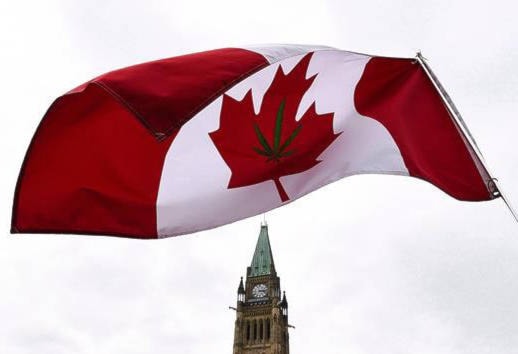At the age of 11, Emma Boniface watched her mother lose herself in the grasp of an opioid addiction.
Diagnosed with a debilitating spinal condition in 2013, Genevieve Gendron was prescribed fentanyl and oxycodone to deal with the chronic pain, and soon began to experience the side effects of opioid use. Before long, she’d lost more than half her teeth, her mobility — and her job.
In 2015, her daughter recalls, Gendron began using medical marijuana — and everything changed.
“She was much happier,” said Boniface, who at the tender age of 14 is scheduled to take the stage Friday at Ottawa’s annual 4-20 rally on Parliament Hill to speak about the power of pot.
“She was awake more often, she was talking with us, she was able to walk. She was able to do stuff, a lot more than before. We had our mom back.”
Marijuana enthusiasts have long been circling April 20 on their calendars as the annual day to celebrate cannabis and the culture surrounding it. In the national capital, they gather by the thousands in the shadow of the Centre Block, defying the authorities amid thick billows of smoke.
But it’s 2018, and things are a little different: the federal government’s Cannabis Act, a central component of the Liberal party’s successful election campaign three years ago, is working its way through Parliament and is expected to make the recreational use of marijuana legal later this summer.
Even so, 4-20 festivities this year will be as much an act of protest as a celebration, organizers say.
The public debate about legal pot that began in 2015 has used young people as a “political football” in order to focus on the potential perils of marijuana, rather than its virtues, co-organizer Shawn MacAleese suggested during a news conference earlier this week.
Making it harder for young people to access and use marijuana has been a central theme of the federal government’s plan. Instead of the black market, legal cannabis will be available on a strictly regulated basis, with the rules being established by the provinces and territories — from how it is produced to how it is advertised and sold to the minimum age for purpose.
That’s why the 14-year-old Boniface was chosen as keynote speaker — the youngest ever for a 4-20 event in Ottawa, MacAleese said. The idea was intended to “put a focal point on the younger generation,” especially teenagers and young dispensary employees.
The government’s message on keeping pot out of young hands has led to what MacAleese called the “corporate commandeering” of what was once an easygoing cannabis culture.
“Have any of us seen or heard teens’ opinions over these issues in the past two years?” he said.
Boniface, for her part, said she plans to talk about her mother’s experiences using medicinal cannabis, as well as the importance of giving teenagers a voice in the debate about legalization.
“I want to be the voice for cannabis and show the government that we want our own word in what’s going on,” she said. “If it’s going to affect us then we want to have our own input into this argument.”
Patients’ Lives Matter, a group that advocates for medical marijuana users, is expecting to see one of the largest crowds in recent memory on Parliament Hill on Friday. Other speakers will include Toronto comic Martha Chaves and local dispensary employees, some of whom have been arrested on the job.
Boniface’s speech will be timed to end just before the clock on the Peace Tower registers 4:20 p.m.
RCMP, Ottawa police and paramedics will be on hand to monitor crowd and motorist safety. Ottawa police are warning drivers to expect traffic delays on neighbouring streets; organizers say they will be working with RCMP to ensure participants safely exit the Hill’s grounds.
RCMP officials would only say they will work with parliamentary security to ensure the safety of everyone on the Hill. “Collectively, we respect and protect the right to peaceful protest,” but officers will “consider evidence and the public interest” throughout the afternoon, a spokesperson said in an email.
On Wednesday, Statistics Canada released the first set of data from its new national cannabis survey, which showed 23 per cent of Canadians between the ages of 15 and 24 having used cannabis in February and March. Twenty-six per cent of Canadians aged 25 to 34 did the same.
The agency has also found that in 2015, 28 per cent of Canadians between the ages of 18 to 24 had used cannabis in the previous year, a significantly higher percentage than those aged 15 to 17 and 25 to 44, who were tied for second place at nearly 18 per cent.
Boniface said education needs to be a top priority. Her mother has been an integral part of the experience, she said, sharing her marijuana journey with her daughter and making sure Boniface understands every aspect of its use.
“If they educate us properly and show us the real benefits and maybe the downsides to cannabis, then we can make our own decisions knowing every possible outcome.”
Raisa Patel, The Canadian Press
Like us on and follow us on .



